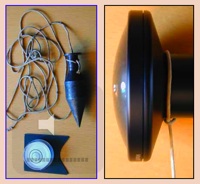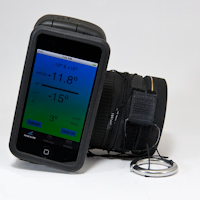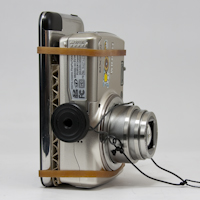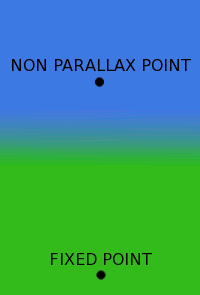Positioning Strings
Non Parallax Points
- The Non Parallax Point (NPP) is the point around which the lens must rotate to take parallax free pictures for panoramas.
- The Non Parallax Point is often refered to as the Nodal Point. Although this is not technically correct it is a common practice, often and easily done.
- Here is a database of NPPs for a range of slr cameras and lenses.
- If you don't know precisely where your NPP is don't worry too much. With very close objects millimeters may count but the further things are the less it matters and with most scenes a good guess should be good enough.
'I' Shaped Strings
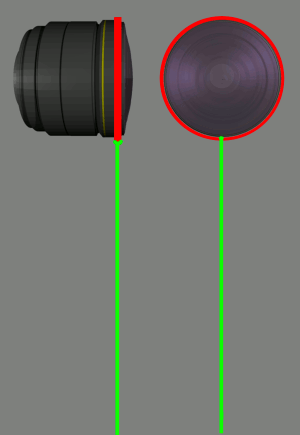
- The idea of a virtual tripod was first shown on the internet by Philippe Hurbain. You read about it here.
- All you need is a rubber band (red), a piece of string (green) and some kind of weight at the bottom.
- And, if assembling one is too much for you, you can even buy one with a massive lead weight !
'Y' Shaped Strings
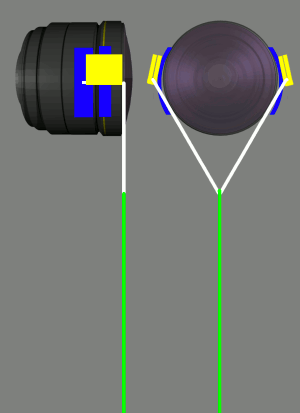
- However this is the kind of arrangement I prefer at present. (Everything is of course as black and invisible as I can make it and this schematic does not show any knots.)
- Blue represents strips of sticky backed velcro attached to the lens. Yellow is the 'ears' made of sticky backed velcro folded back on itself. White is string but actually I'm using transparent fishing line at the moment and green is the vertical string.
- The lens cap fits under the yellow ears so everything is in position with the cap on. In fact it's best to build it with the cap on.
- With an I string tilting up moves the NP point slightly up and back, tilting down moves it slightly down and foreward. Such movement is negligable outdoors but may be more of a problem in small spaces.
- And when a Y string gets pulled off nothing touches the glass, but with a rubber band ... well anything can happen.
Weights
You can use anything as a weight, marbles, teaspoons. Or you can use nothing - just the end of the string.
At the moment I'm using a piece of thin chain, shown right. You can use a single length of about 10 mm (shown right) or twice that doubled into a loop. It's very fast to use because you can drag it into position so that it doesn't swing around. And a loop can be stored safely around a lens.
